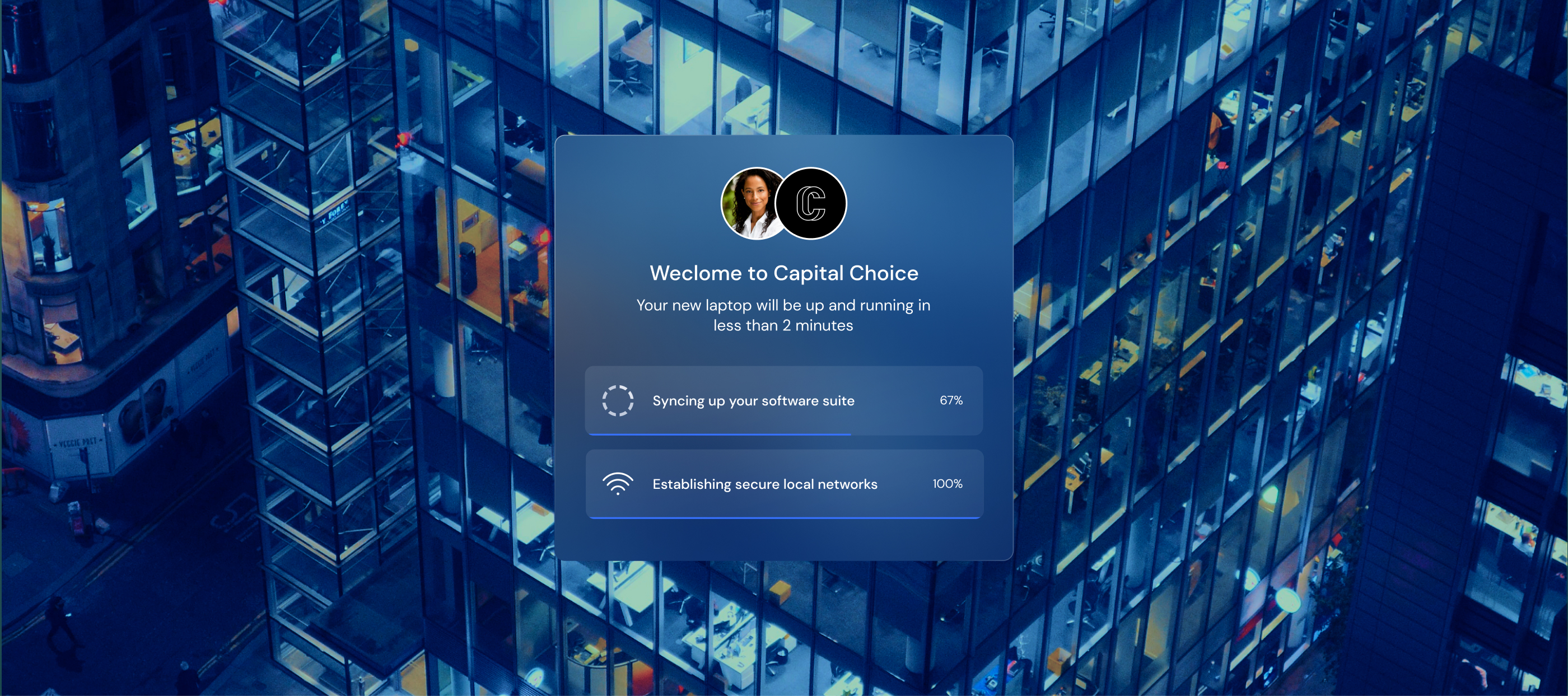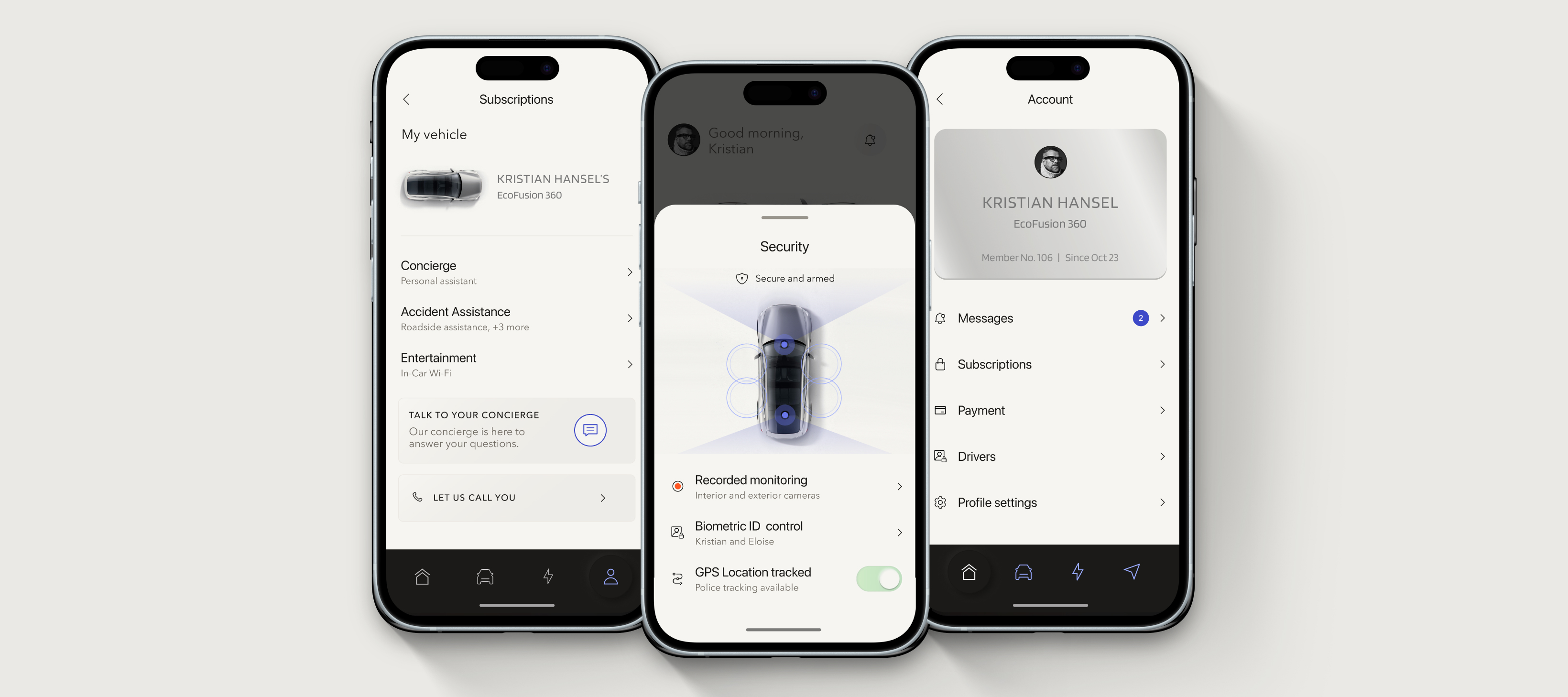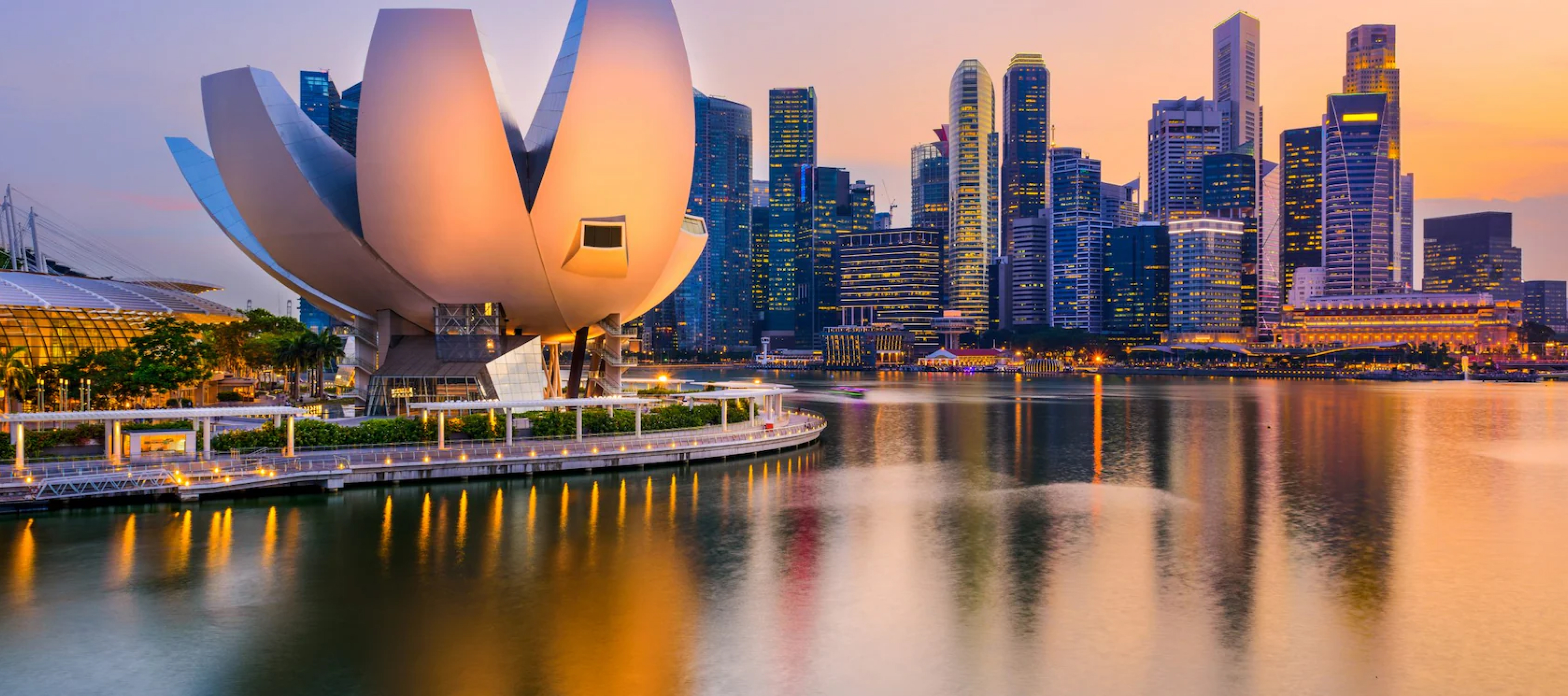
Carnival Cruises
New platform
Transforming cruise experiences with user-centric design
Working with P&O Cruises, I led the transformation of a long, high-consideration purchase journey into a modern, user-centric experience that aligned customer needs with business growth. From helping travellers find the right cruise faster, to streamlining conversion paths, increasing wallet share, and building loyalty post-trip, I shaped a new digital standard for the brand.
The project meant navigating legacy tech, unpicking complex edge cases across cabins, travel parties, and packages, and designing for a wide demographic, all while keeping commercial objectives front and centre. A big, rewarding challenge, and a brilliant partnership from discovery through to delivery.



MY ROLE
I led the design effort end-to-end, starting with internal research to uncover the frustrations, pains, and ambitions of key teams. Working closely with a user researcher, I ensured that the team and the wider business deeply understood both existing guests and the new audiences the brand wanted to attract.
I achieved this by translating insights into clear, actionable themes so we could quickly focus on the right challenges. From there, I set the design vision by defining principles, approach, and priorities. A key focus was streamlining the booking flow to reduce friction and help customers find the right cruise quickly and confidently, minimising “what if there’s something better” hesitation that undermines conversion.
My responsibilities spanned experience mapping, leading discovery workshops, producing wireframes, and delivering high-fidelity designs and prototypes for testing and validation. I also initiated a new design system to drive consistency and unlock speed during delivery and beyond.
Throughout, I worked closely with colleagues to ground design decisions in customer research, ensuring every solution was both user-centred and commercially effective.
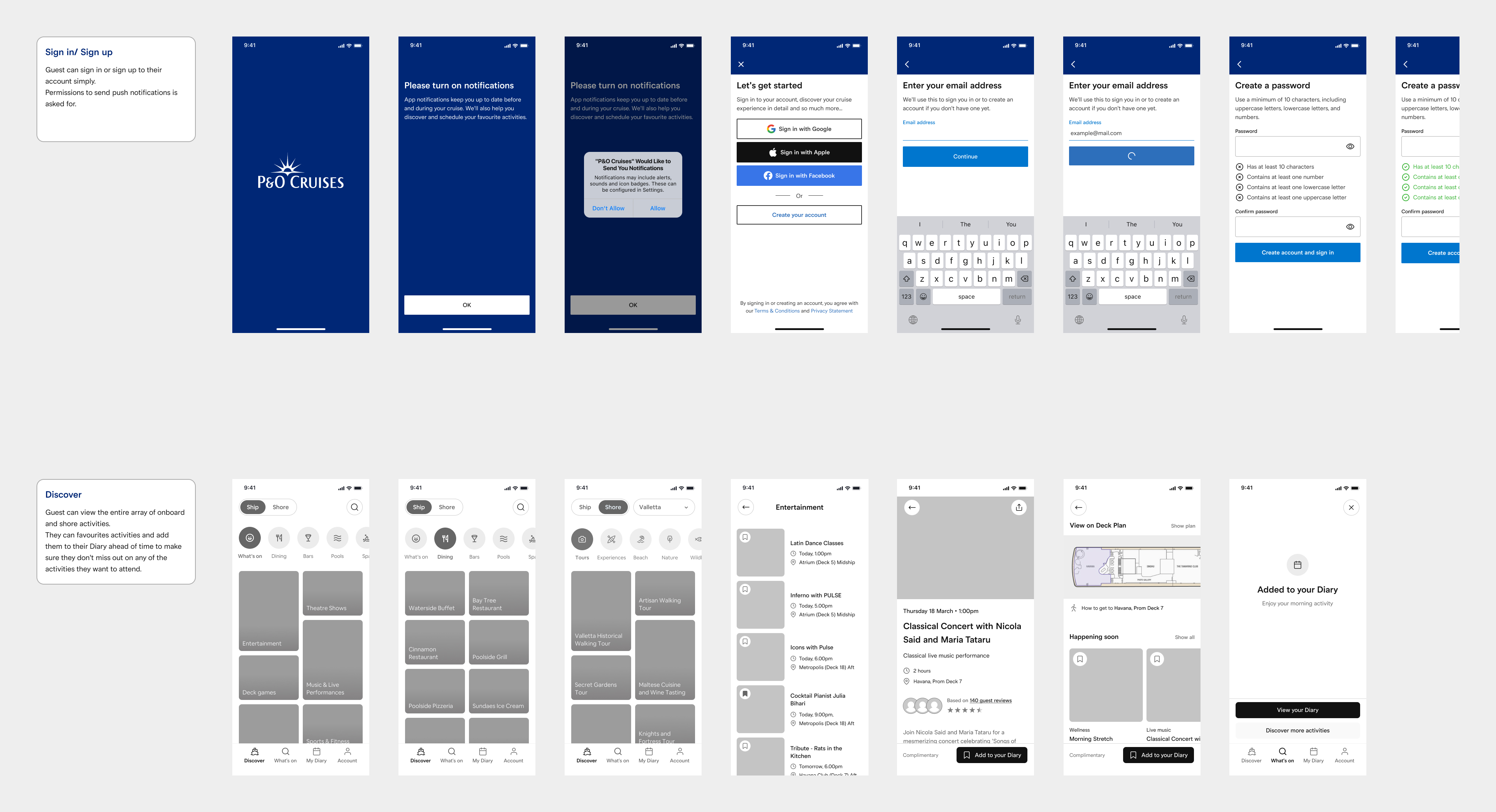
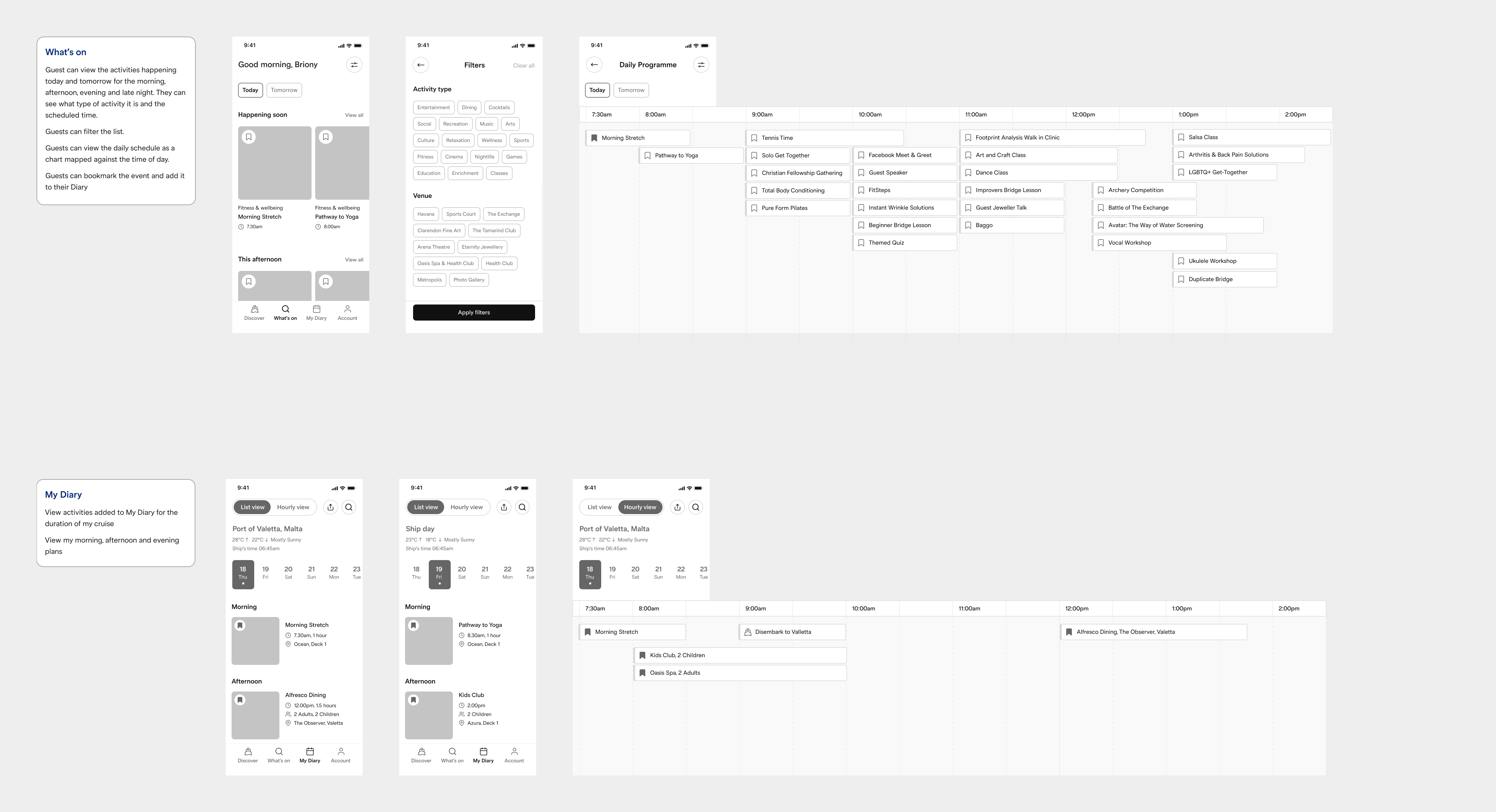
CHALLENGE
Designing for cruise holidays is unlike any other travel experience. The booking journey is long, high-stakes, and full of friction. Guests face a tangle of decisions around cabin type and location, embarkation port, accessibility needs, travel party setup, dining options, and the number of sea days. Alongside this complexity comes high uncertainty: worries about paperwork, hidden costs, timing, and the commitment of booking a trip that often involves several decision-makers. It’s rarely a one-click purchase because most guests return multiple times before they finally commit.
The challenge was to simplify and personalise this journey without losing the detail travellers care about. That meant creating a cohesive experience that spanned every stage, from discovery, comparison, booking, pre-cruise planning, onboard engagement, and post-trip follow-up. Each touchpoint is designed to be intuitive, engaging, and reflective of individual needs.

DESIGN STRATEGY
Our approach was anchored in three design principles. First, Progressive Disclosure: revealing detail only when it mattered, so travellers could navigate a complex purchase without feeling overwhelmed. Second, Optionality without Overload: giving users the ability to drill into preferences and compare options, without forcing complexity upfront. Third, Trust-building and Reactivation: embedding reassurance at every stage and creating smart triggers to bring customers back into the funnel, boosting both confidence and conversion.
These principles were tightly aligned with the business goals: increasing first-time cruise bookings, re-engaging mid-funnel visitors, maximising pre-trip and onboard spend, and ultimately growing customer lifetime value through repeat bookings.
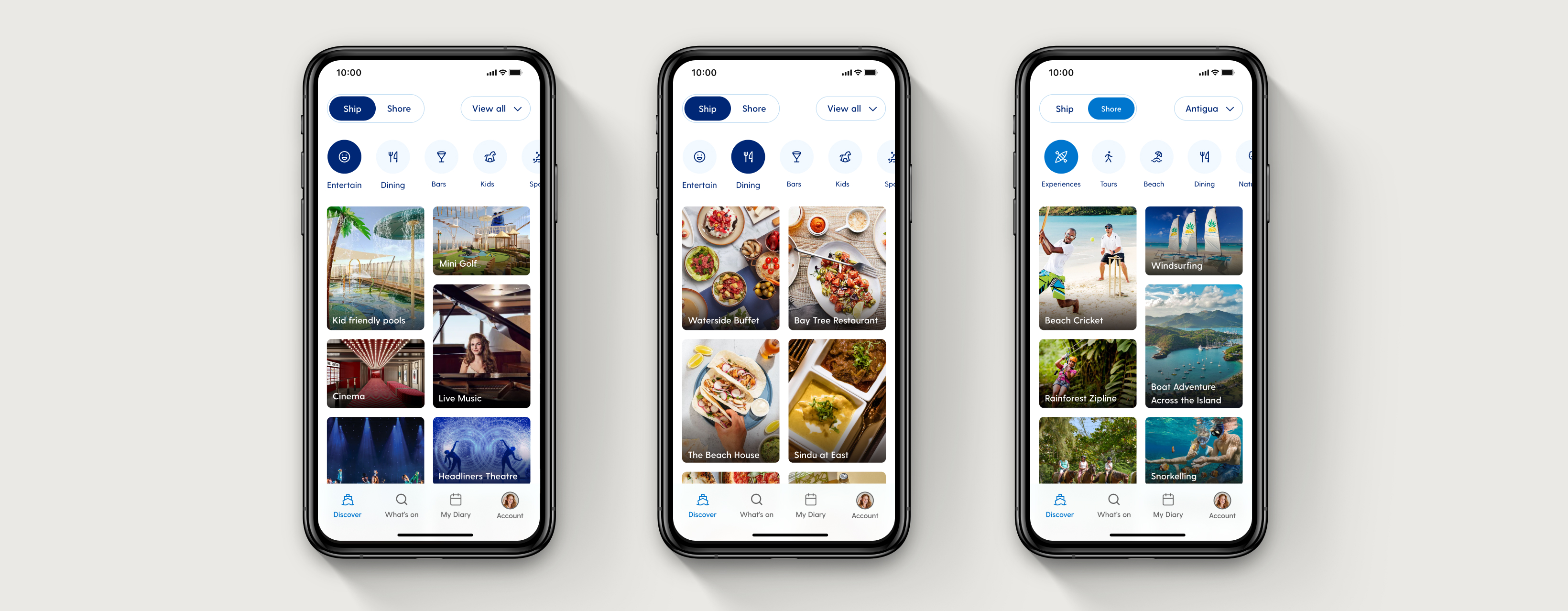
DESIGN APPROACH
I took an iterative, evidence-led approach to design.
Discovery & Mapping
I began by journey-mapping the end-to-end cruise experience and running interviews with both cruise and non-cruise travellers. This helped us pinpoint moments of hesitation and drop-off. Alongside the business, we defined KPIs and success metrics to ensure our design work was tied directly to measurable outcomes.
UX Concepts & Prototyping
From there, I developed a range of low- and high-fidelity prototypes spanning search, selection, booking, and reactivation. These were tested with seasoned cruisers as well as first-timers, giving us insight into both ends of the customer spectrum. Feedback loops, combined with technical feasibility checks, allowed us to refine concepts quickly and confidently.
Cross-functional Delivery
Finally, I moved into delivery, working in sprints with product, data, engineering, and marketing. The rollout was phased and covered search, filtering, itinerary details, the booking flow, and lifecycle communications, so we could deliver impact early while building towards the full vision.
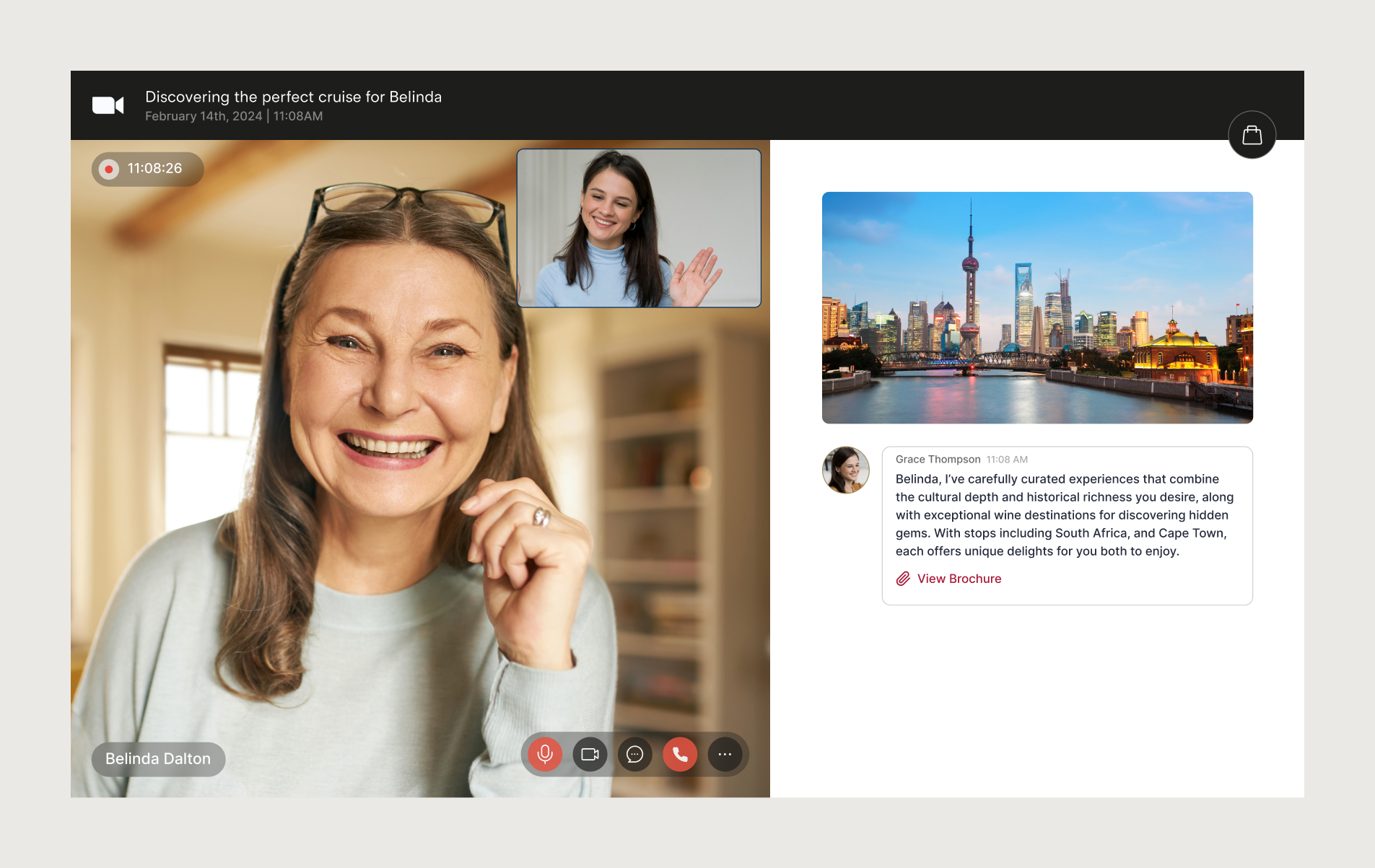


EVIDENCE BASED FEATURES
Our design decisions were grounded in insights from both customers and internal teams, revealing broken journeys, unmet needs, and opportunities to delight. For P&O Cruises, the focus was on ease of use and fixing friction in booking, while for Cunard it was about enriching the journey with premium touchpoints that inspire confidence when booking high-value, high-expectation holidays.
A standout theme was the extraordinary dedication of Carnival’s customer success team, who consistently overcame gaps in the digital experience. Our work aimed to bring that same reassurance and care online.
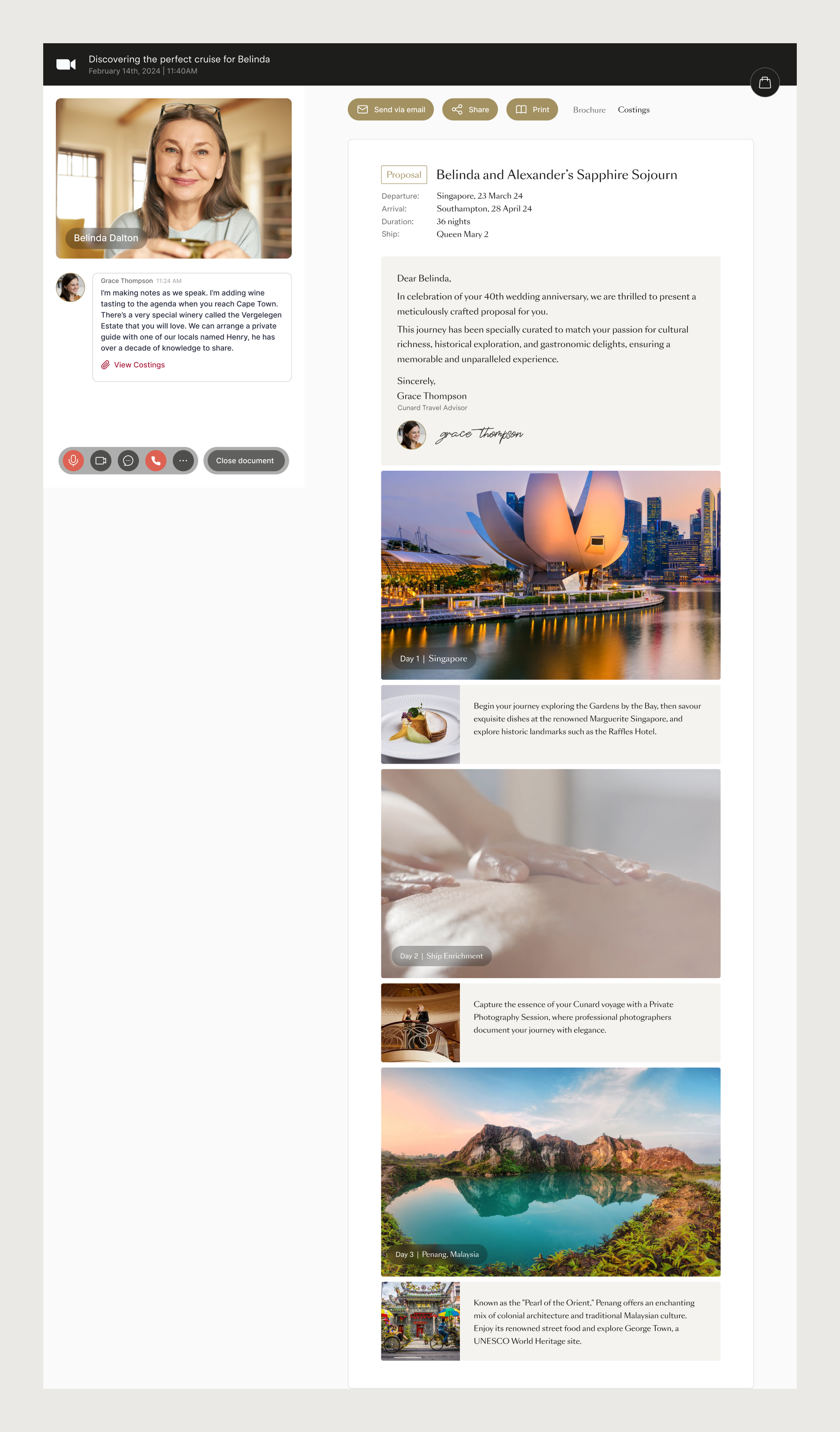
FOCUSED FEATURE SETS
Research showed users often abandoned search because filters felt irrelevant or overwhelming. We introduced smarter, evidence-based filters aligned with real traveller needs (like “low-motion cabins” or “near the spa”) and guided flows that educated first-time cruisers as they explored. An SEO-informed structure ensured these improvements also boosted acquisition.
Guests told us that comparing cruises felt opaque and stressful. In response, we designed progressive reveal patterns to surface detail at the right moment, clear cost breakdowns to remove hidden-fee anxiety, and visual trade-offs (like sea days vs. land days) to build confidence. Shareable trip links addressed the reality that cruise decisions are rarely made alone.
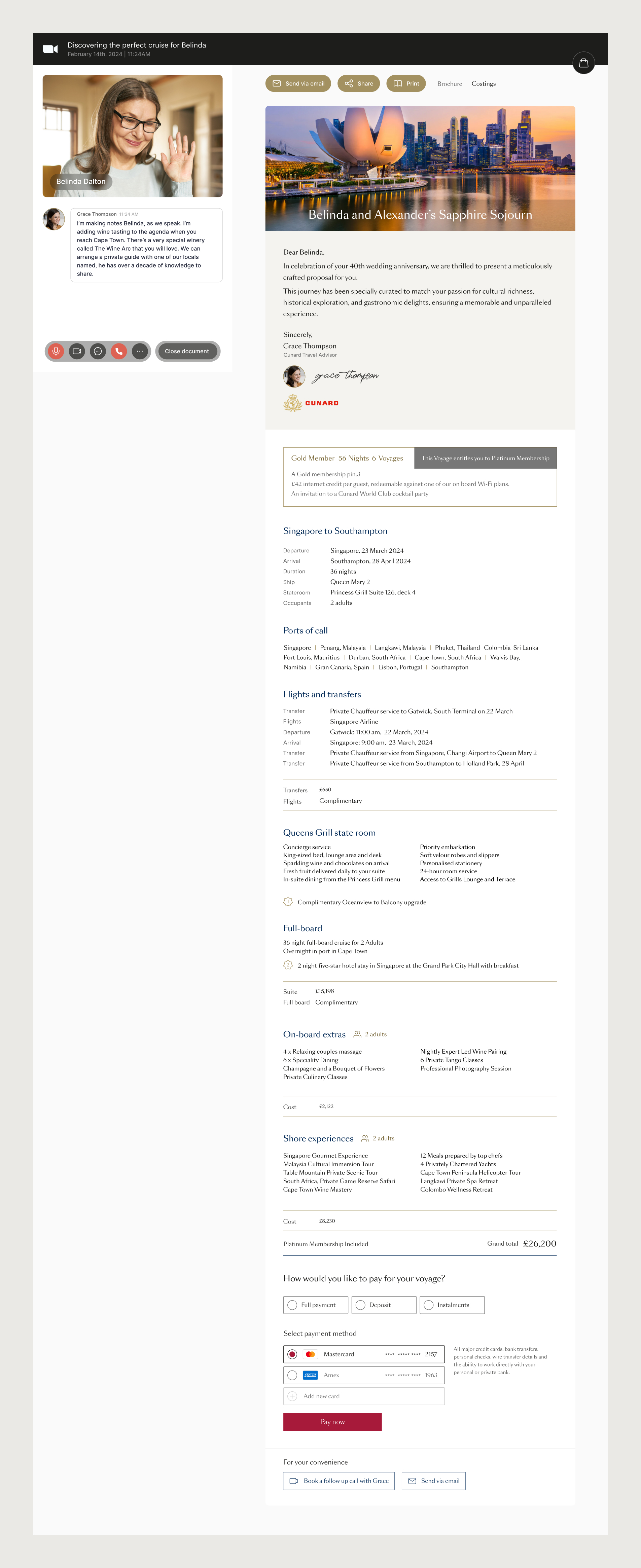
PERSONALISED PLANNING
From our research, we hypothesised that personalised recommendations for excursions, dining, and entertainment, based on guests’ preferences, itineraries, and past behaviours would both enhance the experience and increase engagement with onboard activities. Guests also told us they needed a way to visualise their cruise more comprehensively. By providing realistic previews of activities and excursions, we not only secured interest and encouraged pre-cruise planning, but also supported secondary needs like comparing options, validating choices against personal interests, and sharing plans with travel companions for collaborative decision-making.
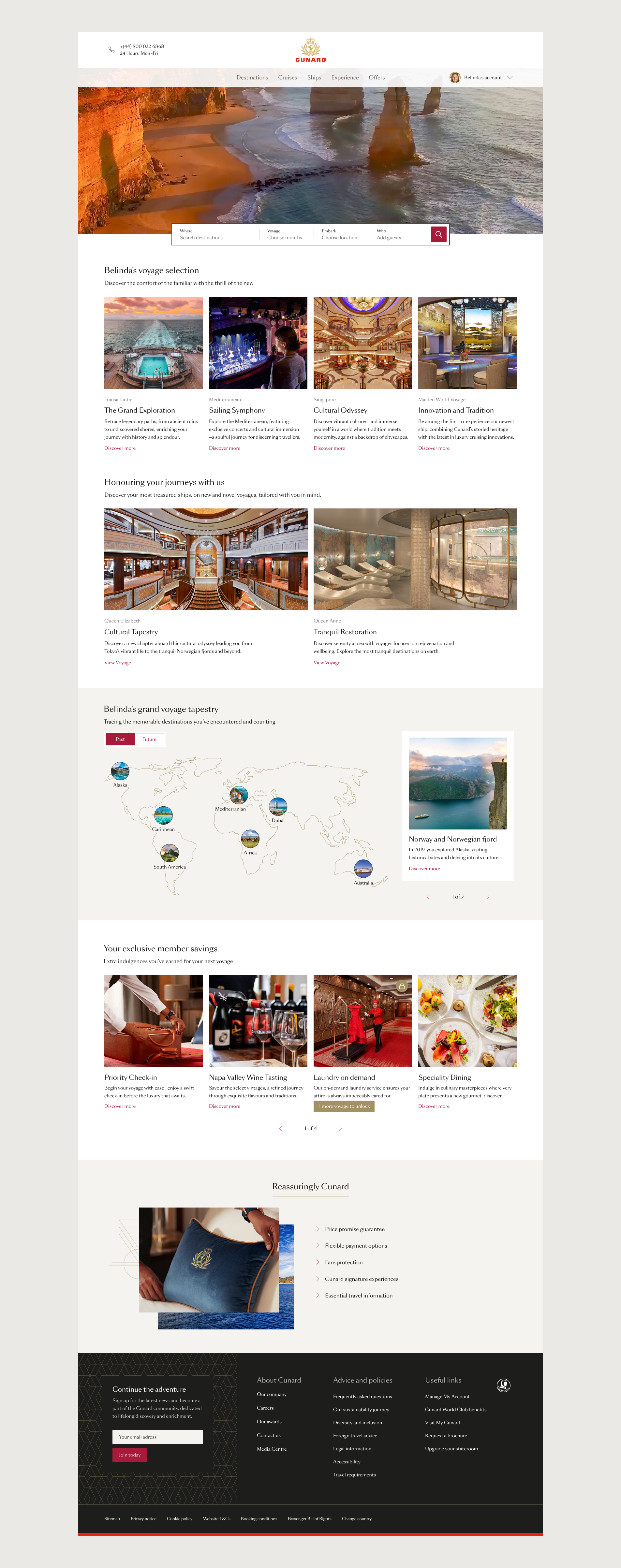
CONFIDENCE AT EVERY STAGE
Clear, upfront information was a vital guest need. Because the planning process often stretched over months, we prioritised transparency around availability, schedules, and pricing. This gave guests confidence, reassured them that they had all the details they needed, and reduced friction in both planning and booking. Personalised assistance, simplified excursion booking, and a smoother onboard journey further strengthened trust. By surfacing concerns about paperwork, dietary needs, and accessibility early and offering flexible options like zero-deposit bookings and staggered payment plans, we removed key barriers. For those who didn’t book straight away, behavioural nudges helped re-engage and inspire them back into the journey.
Once a booking was made, we focused on reducing anxiety and building anticipation. Tailored checklists, travel documentation, and excursion previews helped guests prepare with ease. After their trip, memory-anchored communications extended the emotional connection, while personalised next-trip offers encouraged loyalty and repeat bookings by capturing excitement at its peak.
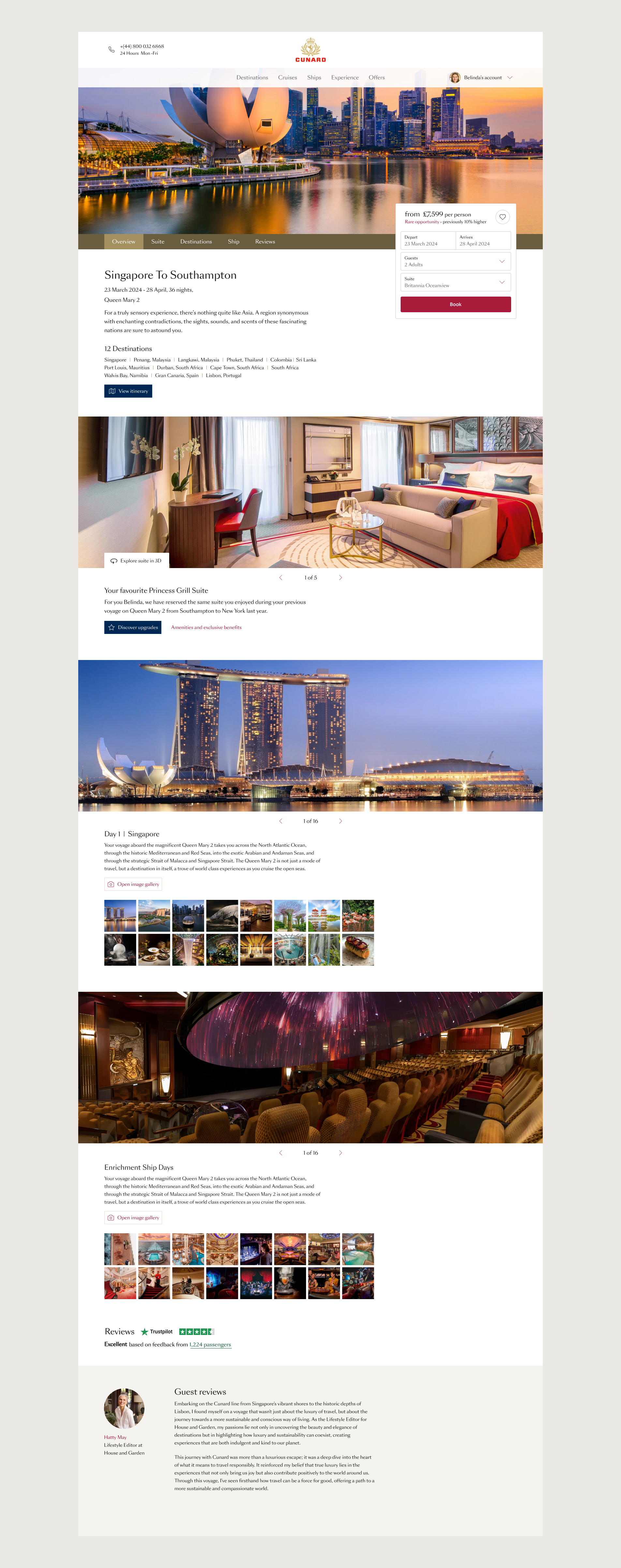
THE MEASURABLE OUTCOMES
Launched in phases, the new experience is already delivering a clear return on investment for both P&O and Cunard. Guests are converting more confidently, spending more pre-trip, and returning to the platform more often. At the same time, customer service teams are handling fewer calls thanks to practical online guides, while NPS scores have risen as guests report smoother, more transparent planning with fewer surprises.
The redesigned journey has shown measurable gains across the funnel. Conversion rates from search to booking rose by around 18%, meaning more travellers moved confidently from browsing to purchase. Reactivation reminders drove a 22% uplift in users returning within two weeks, reducing leakage in what is typically a long and uncertain decision cycle. Guests also committed more spend before departure, with pre-booked extras such as excursions and dining up by 30%, directly boosting onboard revenue and improving operational planning. Even post-trip, engagement with email content increased, particularly where communications tapped into guests’ memories and offered tailored next-cruise suggestions. Together, these improvements translated into stronger revenue per customer, lower acquisition costs, and a healthier pipeline of repeat bookings.
This transformation has positioned Carnival Cruises to translate diverse guest needs into a competitive, future-facing product roadmap. With iterative validation, cross-functional alignment, and momentum across the journey, they are now set up to deliver digital experiences that not only build trust and loyalty, but also drive sustained commercial growth.
